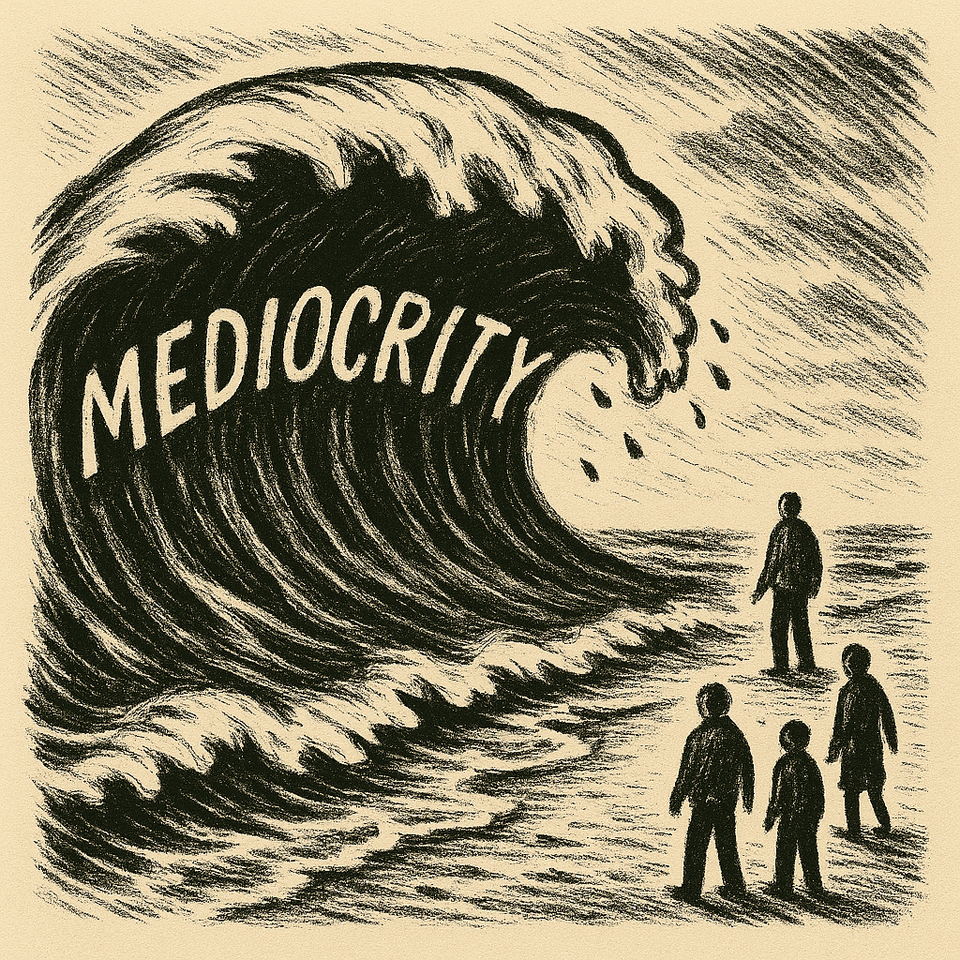A Wave of Mediocrity

"entering the fast fashion era of SaaS very soon." - Sam Altman
In a recent webinar I attended, Jesse James Garrett, author of the seminal book The Elements of User Experience, was asked how AI played into design. He said (and I'm paraphrasing here), "AI gets you to mediocre outcomes very fast."
And for many, many, business owners, mediocrity is all they're looking for. The tech world's obsession with and misunderstanding of Minimum Viable Products has lead many to believe that the real value is in the idea itself, and not in the execution. If they can just get the idea out in the wild, they can polish and refine later.
As AI makes content, product, and app creation cheaper, many companies won't try to develop more than a surface-level understanding of their customers. Instead, they will start pumping out content or app variations as quickly as they can to see what sticks. Many companies will, initially at least, favor volume over value.
Companies will find themselves competing for attention against hackers and spammers who will also utilize AI to scale their operations. In the past, scams have been easy to detect because of low-effort, wonky-looking pages and odd-sounding content. With AI, however, pulling together legitimate-sounding, well-written content and pages becomes easier than ever. Hackers and scammers will add a tidal wave of bogus content to already flooded channels.
This will result in:
- Thousands or even millions of low-effort landing pages, blog posts, product variants and copycats
- SEO and AI search spam, content farms, and AI-generated reviews
- Generic insight reports or whitepapers generated purely for lead generation
Design Implications
- Signal gets drowned in noise. Trust in digital content and search results erodes. It becomes very difficult to find quality, trustworthy products and information.
- Feature chasing on steroids. Businesses will be pressured by investors, board members, and customers to use AI to amplify output. For many businesses, this will mean using AI to mimic successful products and features released by other companies, and to do it as quickly and cheaply as possible.
- Funding shifts. Resources may be moved away from design and engineering to marketing and advertising as an arms race emerges to rise above the noise.
- Building trust will require more effort. With increasingly legitimate-looking scams flooding the market, the old trust signals for websites, apps, and products will prove insufficient. Designers will need to consider new ways to build trust, especially for new and unknown products.
- Being unique and authentic still matter. If you were able to stand out with your work before AI, you'll still be able to stand out after it, although it will require some adaptation on your part. You will need to learn how to incorporate new tools and new techniques into your workflow.
- Leading companies will use AI to amplify, not mimic. If you want to stand out from the noise, you'll need to discover how you can leverage AI to amplify the creativity and human capital that already exists inside your organization.
- You may need to avoid certain patterns. People are excellent at spotting patterns, and they learn over time what types of patterns or rhetorical devices are favored by AI. For example, there has been a recent backlash against the use of the em dash—yes, like the dash I just used—because many view it as a sign that something was written by AI.
- AI can act as an indicator of what not to do. It seems like every text and email editor has AI built into it now that will suggest next words and phrases for you as you type. If you want to stand out, avoid the temptation to use these suggestions. The same goes for generated designs. In instances where you need to stand out, avoid the temptation to just go with the first thing AI suggests.
- Having direct relationships with customers will matter more than ever. Customers will come back to your product over and over again if you give them a reason to interact with you. People will increasingly value authentic, direct interactions with companies.
- Multiple entry points into the brand. Companies may need to explore additional entry points into the brand and their products than they've traditionally offered (e.g. distribution partnerships).
Member discussion